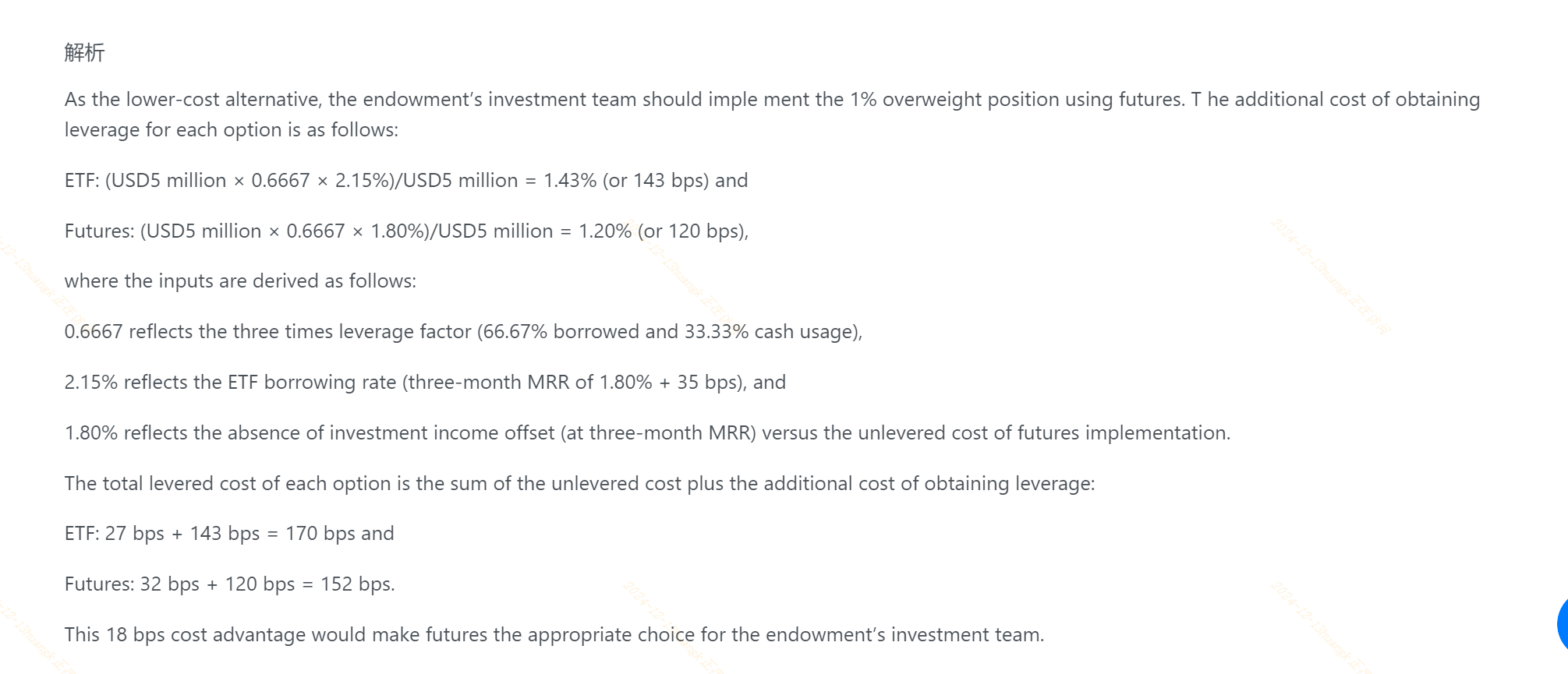NO.PZ2024102501000004
问题如下:
In its quarterly policy and performance review, the investment team for the Per alandra University endowment identified a tactical allocation opportunity in in ternational developed equities. The team also decided to implement a passive 1% overweight (USD5 million notional value) position in the asset class. Implemen tation will occur by using either an MISC EAFE Index ETF in the cash market or the equivalent futures contract in the derivatives market.
The team determined that the unlevered cost of implementation is 27 bps in the cash market (ETF) and 32 bps in the derivatives market (futures). This modest cost differential prompted a comparison of costs on a levered basis to preserve liquidity for upcoming capital commitments in the fund’s alternative investment asset classes. For the related analysis, the team’s assumptions are as follows:
■ Investment policy compliant at three times leverage
■ Investment horizon of one year
■ Three-month MRR of 1.8%
■ ETF borrowing cost of three-month MRR plus 35 bps
Recommend the most cost-effective strategy. Justify your response with calcula tions of the total levered cost of each implementation option.
选项:
解释:
As the lower-cost alternative, the endowment’s investment team should imple ment the 1% overweight position using futures. T he additional cost of obtaining leverage for each option is as follows:
ETF: (USD5 million × 0.6667 × 2.15%)/USD5 million = 1.43% (or 143 bps) and
Futures: (USD5 million × 0.6667 × 1.80%)/USD5 million = 1.20% (or 120 bps),
where the inputs are derived as follows:
0.6667 reflects the three times leverage factor (66.67% borrowed and 33.33% cash usage),
2.15% reflects the ETF borrowing rate (three-month MRR of 1.80% + 35 bps), and
1.80% reflects the absence of investment income offset (at three-month MRR) versus the unlevered cost of futures implementation.
The total levered cost of each option is the sum of the unlevered cost plus the additional cost of obtaining leverage:
ETF: 27 bps + 143 bps = 170 bps and
Futures: 32 bps + 120 bps = 152 bps.
This 18 bps cost advantage would make futures the appropriate choice for the endowment’s investment team.
就算理解成,3倍杠杆,future合同的保证金是借的,那应该也只需要借5million * 0.3333这么多的保证金啊,这样才能保证合约金额/保证金金额=3吧,所以这个成本也应该是(5*0.3333*1.8%)/5 = 60bp才对吧
所以要么是60bp,要么是0bp,怎么都不应该是这个120bp吧




